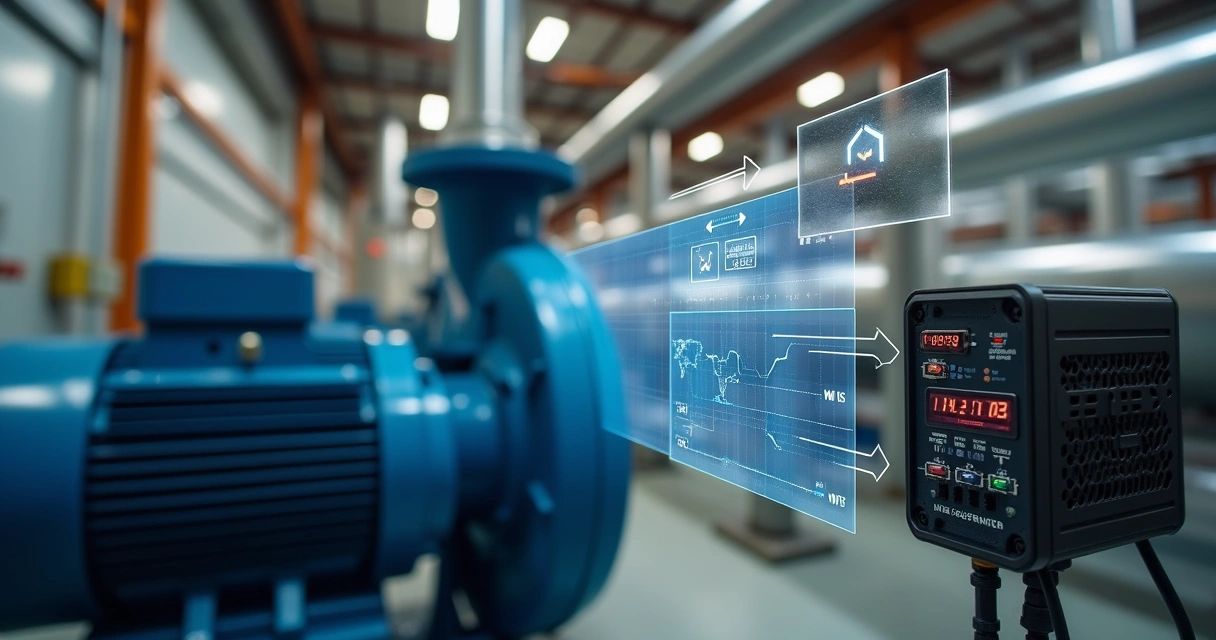A Guide to Integrating AI with SCADA Systems in Maintenance

At 2 a.m., a pump trips. The SCADA screen glows red. You see the alarm, but not the why. With AI beside SCADA, the story changes. You get an early hint, a likely cause, and a simple path to fix. I have seen that look of relief on night-shift faces. It stays with you.
Less guessing. More knowing.
This guide shares a practical path to bring AI into your SCADA world. It is not magic. It is a set of choices that line up data, models, and people. Prelix fits right here, since it turns failure data into root causes and clear reports, and it connects with maintenance tools you already trust.
Why pair AI with SCADA
SCADA is great at situational awareness. AI adds foresight. When paired, maintenance teams shift from fixed intervals to condition-based plans. In many plants, that change pays for itself fast. For example, reporting in Plant Engineering shows savings up to $16,000 per year per pump when moving from schedule-based to condition-based routines, thanks to tighter thresholds and better timing of work. You can find that view in reporting on SCADA data in maintenance workflows.
There is also evidence from research. Work by Lorenzo Gigoni and colleagues used machine learning on SCADA streams to predict wind-turbine component failures up to two months ahead. That window matters. It buys parts, plans downtime, and avoids rush orders. And for small and mid-size firms, a hybrid approach can help on both anomalies and threats. The DETECTA 2.0 study by Álvaro Huertas‑García and team shows how real-time detection and forecasting, wrapped in a Digital Twin view, can raise confidence in both maintenance and cybersecurity.

Prepare your data and tags
Strong AI needs clean signals. Start with a simple inventory:
- List critical assets and SCADA tags that reflect load, vibration, temperature, pressure, and flow.
- Confirm sampling rates and historian retention. Aim for steady time stamps and minimal gaps.
- Align events to work orders. When was a bearing replaced? When did a seal leak? Labels help models learn.
- Note operating modes. A pump at startup behaves unlike steady state. Segment your data by mode.
Set a basic data policy. Define who can view, who can export, and how long data stays. Keep a read-only interface for AI where possible. That habit tends to lower risk. It also keeps audits calm.
Choose a simple architecture
There are many shapes. You can keep it simple and safe.
- Pull data from SCADA or the historian via a read-only connector, preferably inside the plant network.
- Stage data at the edge for filtering and feature building. Think moving averages, deltas, and health scores.
- Send features to an AI service for inference. Keep raw controls data on site if policy requires.
- Return results to SCADA as tags, or send them to the maintenance system as alerts or work requests.
- Log outcomes so the model can improve. Closed loops matter, even if they start small.
Some teams prefer all on-prem. Others are fine with a hybrid setup. Both can work. What counts is clear paths in and out, and a way to measure whether alerts help the crew.
Model types that fit maintenance
You do not need a fancy stack on day one. Pick by use case:
- Anomaly detection finds out-of-pattern behavior without failure labels. Good for new lines and rare faults.
- Classification maps signals to known failure modes, like misalignment or cavitation.
- Forecasting predicts near-term values, which can flag drift and wear.
What happens after an alert is where value shows. Prelix helps here by turning events into 5 Whys and cause-effect diagrams you can hand to the team lead. If you need a hands-on reference, the RCA with AI guide for industrial teams walks through steps in plain language. There are local versions too, such as the guia em Português, the guide en Français, and the guía en Español.
As models run, watch drift. Inputs change when sensors age or operators adjust setpoints. A simple weekly check on error rates and false alarms can keep trust high. I think that is the part people often skip, then wonder why alerts grow noisy.

Security, safety, and compliance
Keep AI interfaces read-only to control points. If writes are needed, use a separate approval step. Encrypt data on the wire and at rest. Apply role-based access and track who changed what. The Digital Twin idea from the DETECTA 2.0 study also helps, since it gives a clear, visual layer where people can review alerts without touching controls.
Test fail-safe behavior. If the model is offline, SCADA must keep running as usual. No surprises. No hidden logic in the loop.
Rollout and ROI without the hype
Start with one asset class. A pump train, a fan bank, or a heat exchanger pair. Define simple measures:
- Number of early warnings that led to planned work.
- False alarm rate per month.
- Mean time between failures before and after.
- Maintenance cost per asset over the pilot period.
You can do rough math. If one pump saves a few hours of downtime and avoids rush parts, the math adds up fast. The reported $16,000 per pump per year for condition-based plans gives a hint of what is possible. Results vary, of course.
Closing thoughts
I have seen AI with SCADA turn long nights into short calls. Not every time, but often enough to make a difference. If this feels like your next step, Prelix can plug into your current setup, surface likely causes, and craft clear reports your auditors will accept. For ongoing ideas and field notes, the Blog de Prelix is a good place to read and, perhaps, to challenge a few assumptions. Try Prelix in a small pilot and use the gains to fund the next move.
Preguntas más frecuentes
What is AI integration in SCADA?
It means adding models that read SCADA and historian data to spot patterns, predict faults, and suggest actions. The AI runs beside your control system. It sends insights as tags, alerts, or reports, without taking over control.
How to start using AI in SCADA?
Pick one asset class and a small data set. Set a read-only link from SCADA or the historian, build simple features, and run a pilot model. Close the loop with clear workflows, like 5 Whys. The Prelix guides on RCA can help frame those steps.
Is AI in SCADA worth the cost?
Often yes, when focused on high-impact assets. Studies show strong gains, such as the ability to predict turbine failures weeks ahead and reported savings per pump each year. Your result depends on data quality and how you act on alerts.
What are the benefits of AI SCADA?
You get earlier warnings, fewer blind spots, and clearer reports. Teams can plan work, reduce emergency fixes, and improve safety outcomes. With tools like Prelix, you also get faster root-cause insight and better audit trails.
How much does AI SCADA cost?
Costs vary by scope. You will pay for data connectors, storage, model work, and change management. A small pilot can start modestly. Many teams fund growth with savings from the first wins, asset by asset, rather than a big upfront spend.
